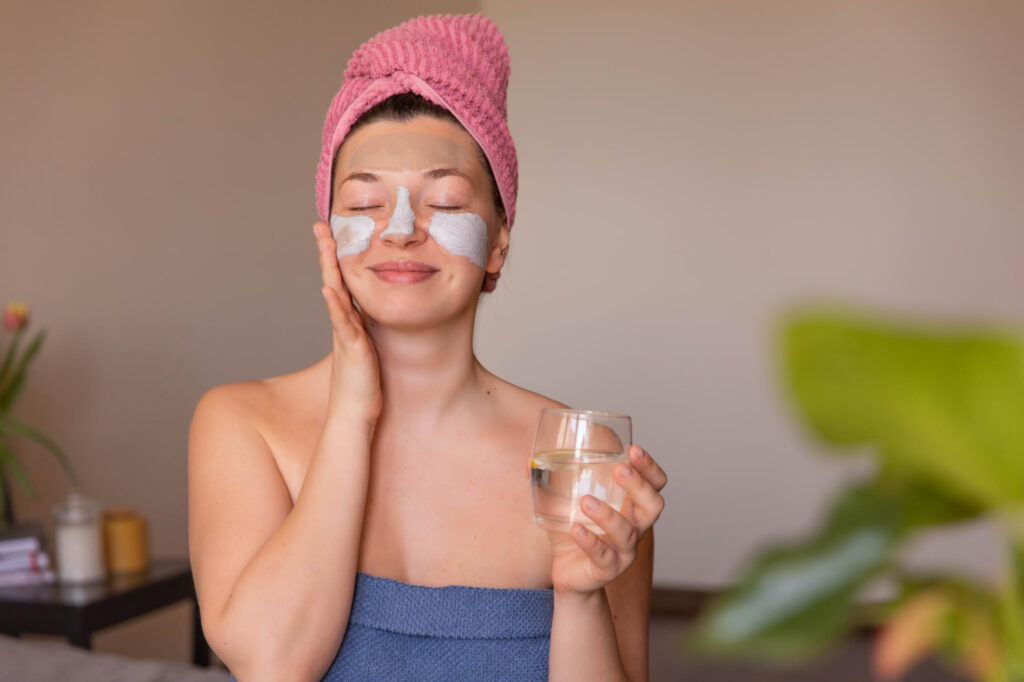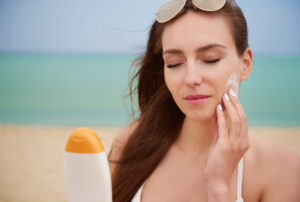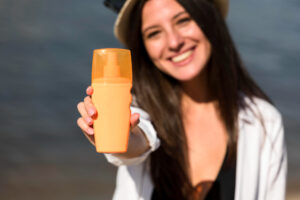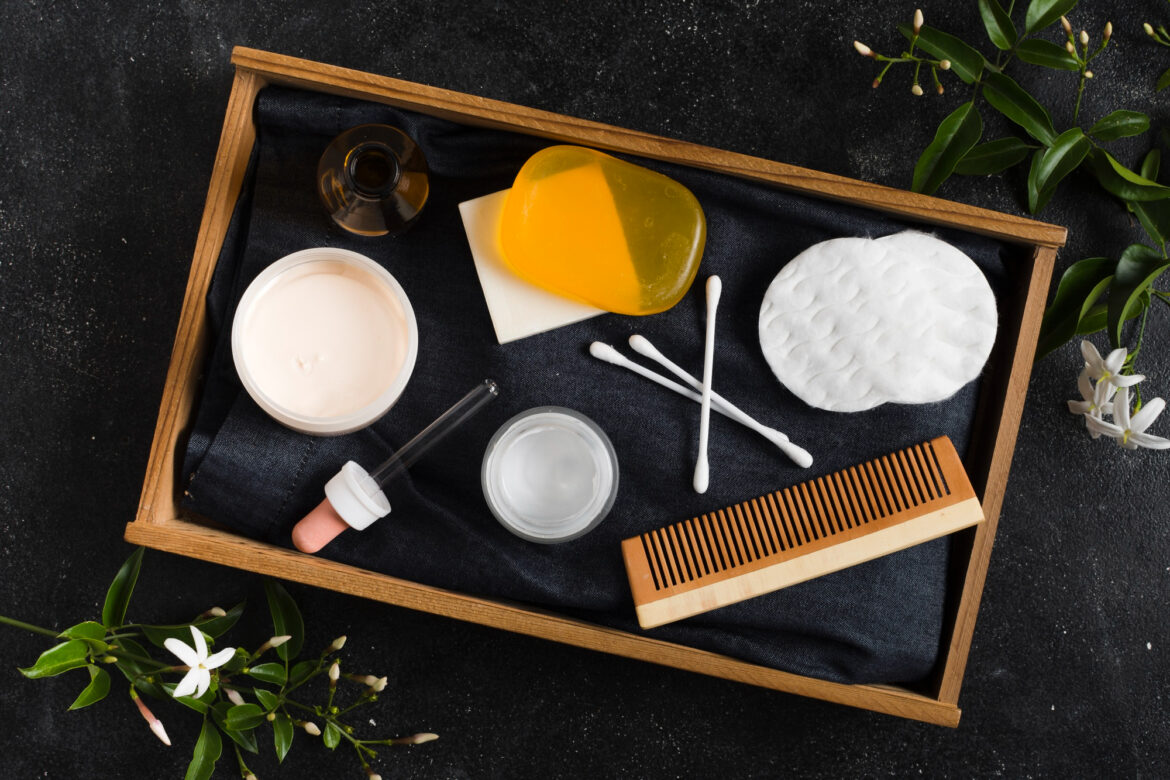Sunscreen is a vital part of our skincare routine, protecting our skin from harmful UV rays and reducing the risk of skin cancer. However, some people have started to explore homemade alternatives, often believing that these DIY solutions are safer, more natural, or less expensive. But the question remains: does homemade sunscreen actually work? In this comprehensive guide, we’ll dive into the facts about homemade sunscreens, how they compare to store-bought options, and what you need to know to protect your skin effectively.
Table of Contents
ToggleWhat is Sunscreen and Why is it Important?
Sunscreen is a topical product that helps protect your skin from the sun’s ultraviolet (UV) radiation. UV rays can damage the skin, leading to sunburn, premature aging, and even skin cancer. There are two types of UV rays to be aware of:
- UVA rays: These rays penetrate deep into the skin and are responsible for aging and wrinkles.
- UVB rays: These rays affect the surface of the skin, causing sunburn and contributing to skin cancer.

Sunscreens work by either absorbing, reflecting, or scattering UV rays to minimize their impact on your skin. They are typically rated with a Sun Protection Factor (SPF), which indicates how well they protect against UVB rays. An SPF of 30, for example, blocks about 97% of UVB rays, while SPF 50 blocks approximately 98%.
The Appeal of Homemade Sunscreens
With growing interest in natural and DIY skincare, many people have turned to homemade sunscreens as an alternative to commercial products. The appeal of homemade sunscreen often includes:

- Natural Ingredients: Avoiding chemicals found in store-bought sunscreens.
- Cost-Effectiveness: Potential savings by using ingredients you already have at home.
- Customization: Tailoring the sunscreen to specific skin needs or preferences.
- Environmental Concerns: Reducing plastic waste and avoiding ingredients harmful to marine life.
Also Read:
Sunshine Savvy: Do I Really Need Sunscreen Every Day?
Common Ingredients in Homemade Sunscreens
Homemade sunscreens typically rely on natural ingredients believed to offer some degree of sun protection. Some common ingredients include:
- Zinc Oxide: A mineral that provides broad-spectrum protection by sitting on the skin’s surface and reflecting UV rays.
- Coconut Oil: Often used in homemade sunscreens for its moisturizing properties, although its SPF is very low (around SPF 4-5).
- Shea Butter: Another moisturizing ingredient with a low SPF.
- Beeswax: Used to thicken the mixture and make it water-resistant.
- Essential Oils: Sometimes added for fragrance or additional skin benefits, though they offer minimal, if any, sun protection.
Do Homemade Sunscreens Actually Work?
The effectiveness of homemade sunscreens is a topic of much debate. Here are some key considerations:
-
Inconsistent SPF Levels
One of the main issues with homemade sunscreen is the inconsistency in SPF levels. When you make sunscreen at home, it’s difficult to ensure that the ingredients are evenly distributed, which means the level of protection can vary across different parts of your skin. This inconsistency can leave some areas underprotected, increasing your risk of sunburn and skin damage.

-
Limited UV Protection
While ingredients like zinc oxide do provide some level of protection, most other ingredients commonly used in homemade sunscreens, such as coconut oil and shea butter, offer very low SPF. These natural ingredients are not sufficient to protect your skin from the full spectrum of UV rays, especially when exposed to the sun for extended periods.
More Information: For a detailed look at SPF and UV protection, check out Skin Cancer Foundation’s guide to sunscreen.
-
Lack of Water Resistance
Commercial sunscreens often include ingredients that make them water-resistant, which is crucial if you’re swimming or sweating. Homemade sunscreens, on the other hand, may wash off easily, leaving your skin vulnerable to UV damage.
-
No Standard Testing
One of the biggest drawbacks of homemade sunscreen is the lack of standard testing. Commercial sunscreens undergo rigorous testing to ensure they meet specific safety and effectiveness standards. Homemade sunscreens do not undergo such testing, so there’s no guarantee that they provide adequate protection.
Also Read:
Should I Wash My Face With Cold Water or Hot Water? The Great Face Wash Debate
The Risks of Using Homemade Sunscreens
Using homemade sunscreen comes with several risks:
- Sunburn: Without reliable SPF protection, your skin is more likely to burn.
- Skin Damage: Prolonged exposure to UV rays can lead to premature aging, hyperpigmentation, and increased risk of skin cancer.
- False Sense of Security: Believing that your homemade sunscreen is effective when it isn’t can lead to more time spent in the sun without adequate protection.
What Do Experts Say?
Dermatologists and skin care experts generally advise against using homemade sunscreens. The consensus is that while natural ingredients can be beneficial for the skin, they do not offer sufficient protection against UV rays. The American Academy of Dermatology recommends using a broad-spectrum sunscreen with an SPF of 30 or higher, which has been tested and proven to protect against both UVA and UVB rays.
Alternatives to Homemade Sunscreens
If you’re concerned about the ingredients in commercial sunscreens or want a more natural option, there are alternatives available that offer both safety and effectiveness:
-
Mineral Sunscreens
Mineral sunscreens, also known as physical sunscreens, contain natural active ingredients like zinc oxide or titanium dioxide. These sunscreens sit on top of the skin and physically block UV rays. They are often recommended for people with sensitive skin or those looking for a more natural option.

More Information: Learn about the benefits of mineral sunscreens on Healthline’s mineral vs. chemical sunscreen guide.
-
Reef-Safe Sunscreens
Reef-safe sunscreens are formulated without ingredients that harm marine life, such as oxybenzone and octinoxate. These sunscreens are a good choice for environmentally conscious individuals who still want reliable sun protection.
More Information: For a list of reef-safe sunscreens, visit National Geographic’s guide to reef-friendly sun protection.
-
Natural-Based Commercial Sunscreens
There are also commercially available sunscreens that use natural and organic ingredients, avoiding harsh chemicals while still providing effective protection. These products are often free from parabens, sulfates, and synthetic fragrances.
More Information: Check out EWG’s guide to sunscreens for ratings and recommendations on natural and organic sunscreens.
How to Protect Your Skin Effectively
While sunscreen is a crucial part of sun protection, it’s not the only step you should take. Here are some additional tips to protect your skin:
-
Wear Protective Clothing
Clothing can provide an additional layer of protection against UV rays. Look for tightly woven fabrics, and consider wearing a wide-brimmed hat and sunglasses to protect your face and eyes.
-
Seek Shade
The sun’s rays are strongest between 10 a.m. and 4 p.m. If possible, stay in the shade during these hours to reduce your risk of sunburn.
-
Use Sunscreen Correctly
Apply sunscreen generously and evenly to all exposed skin at least 15 minutes before going outside. Reapply every two hours, or more often if you’re swimming or sweating.
-
Check the UV Index
The UV index provides a forecast of the expected risk of overexposure to UV rays. When the UV index is high, take extra precautions to protect your skin.
More Information: For daily UV index forecasts, visit Met Office’s UV index page.
DIY Sunscreen: Should You Ever Consider It?
While the idea of making your own sunscreen may be appealing, the risks generally outweigh the benefits. If you still want to explore DIY options, consider using them as a supplement to, rather than a replacement for, tested and proven commercial sunscreens. For example, homemade sunscreen could be used on low-exposure areas or when combined with other sun protection measures like clothing and shade.
Final Thoughts: Stick to Tested Sunscreens
In conclusion, while homemade sunscreens might seem like a natural and cost-effective alternative, they generally do not provide the reliable protection that your skin needs. The risks of using a homemade sunscreen, including sunburn, skin damage, and increased risk of skin cancer, are simply too high. For effective and safe sun protection, it’s best to stick to commercially available sunscreens that have been tested and meet safety standards.
If you’re concerned about the ingredients in your sunscreen, there are many natural and mineral-based options available that provide safe, effective protection without the use of harsh chemicals. Remember, protecting your skin from the sun is crucial for maintaining healthy skin and preventing long-term damage, so choose your sunscreen wisely.
For more information on sun safety and skin protection, consider visiting these helpful resources:
- British Association of Dermatologists – Sunscreen Advice
- Cancer Research UK – Sunscreen and Sun Safety
- Skin Cancer Foundation – Sunscreen Guide
By making informed choices and using effective sun protection, you can enjoy the outdoors safely while minimizing the risk of skin damage. Remember, protecting your skin is an essential part of your overall health and well-being, and choosing the right sunscreen is a critical step in that process.
FAQs About Homemade Sunscreens and Sun Protection
To help you further understand the topic, here are some frequently asked questions about homemade sunscreens and sun protection:
- Can I trust the SPF of homemade sunscreens?
The SPF (Sun Protection Factor) of homemade sunscreens is highly unreliable because it’s difficult to measure and ensure consistency across different batches. Without laboratory testing, there’s no way to guarantee that your homemade sunscreen will provide adequate protection. Commercial sunscreens undergo rigorous testing to confirm their SPF levels, making them a safer and more reliable option.
- Is zinc oxide in homemade sunscreen effective?
Zinc oxide is one of the few ingredients in homemade sunscreens that can provide effective UV protection. However, the effectiveness depends on the concentration and proper distribution in the mixture. If not mixed correctly, some areas of your skin may receive little to no protection, leaving you vulnerable to sunburn. For reliable protection, it’s better to use a commercial sunscreen that contains zinc oxide and has been properly formulated and tested.
- What are the risks of using essential oils in sunscreen?
While essential oils are popular in DIY skincare products, they are not suitable for sun protection. Some essential oils, like citrus oils, can even increase your skin’s sensitivity to the sun, leading to a higher risk of sunburn. Essential oils do not provide any significant SPF and should not be relied upon for sun protection.
- How does homemade sunscreen compare to mineral sunscreen?
Mineral sunscreens, which contain zinc oxide or titanium dioxide, are highly effective and provide broad-spectrum protection against both UVA and UVB rays. These products are formulated and tested to ensure consistent SPF levels and water resistance. In contrast, homemade sunscreens lack the rigorous testing and consistency of mineral sunscreens, making them less reliable and potentially unsafe for adequate sun protection.
- Can I combine homemade sunscreen with commercial sunscreen?
While you can use homemade sunscreen in addition to commercial sunscreen, it’s important not to rely on the homemade version for primary protection. Instead, use a tested and proven commercial sunscreen as your main form of sun protection, and consider the homemade version as an extra layer or for areas with less sun exposure. Always prioritize products that have been scientifically tested and approved.
- What is the best way to protect my skin from the sun?
The best way to protect your skin from the sun is to use a broad-spectrum sunscreen with an SPF of 30 or higher, apply it generously, and reapply it every two hours, or more often if you’re swimming or sweating. In addition to sunscreen, wear protective clothing, seek shade during peak sun hours, and avoid prolonged sun exposure. Combining these methods offers the best protection against harmful UV rays.
- Are there any natural alternatives to sunscreen?
While no natural alternative can completely replace sunscreen, some measures can help reduce your need for sunscreen. Wearing UV-protective clothing, such as long sleeves and wide-brimmed hats, and staying in the shade can significantly reduce your sun exposure. However, these methods should complement, not replace, the use of sunscreen, especially when you’re spending extended time outdoors.
- Why is water resistance important in sunscreen?
Water resistance is crucial in sunscreen because it ensures the product remains effective even when you’re swimming, sweating, or exposed to moisture. Without water resistance, sunscreen can easily wash off, leaving your skin unprotected. Commercial sunscreens are tested for water resistance, typically providing 40 to 80 minutes of protection while in the water. Homemade sunscreens lack this feature, making them less reliable in these conditions.
- What should I do if I get sunburned after using homemade sunscreen?
If you experience sunburn after using homemade sunscreen, take immediate steps to care for your skin. Move out of the sun and into a cool, shaded area. Apply aloe vera or a cool compress to soothe the burn, and stay hydrated by drinking plenty of water. Avoid further sun exposure until the burn has healed. For severe sunburns, such as those with blistering or extensive redness, seek medical attention.
- Is there any situation where homemade sunscreen might be useful?
Homemade sunscreen might be useful in situations where sun exposure is minimal or when used in conjunction with other protective measures, like clothing and shade. However, it’s important to understand that homemade sunscreens should never replace commercially tested sunscreens, especially during prolonged sun exposure. For reliable protection, always use a product that has undergone safety and efficacy testing.
